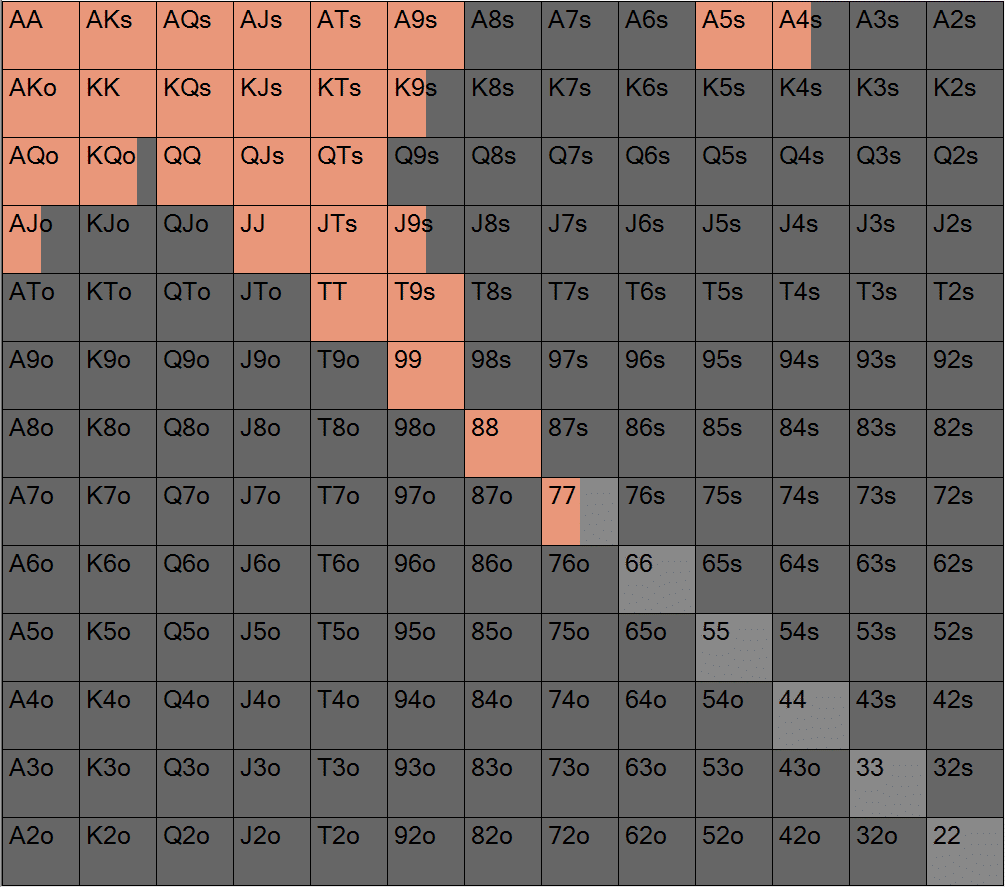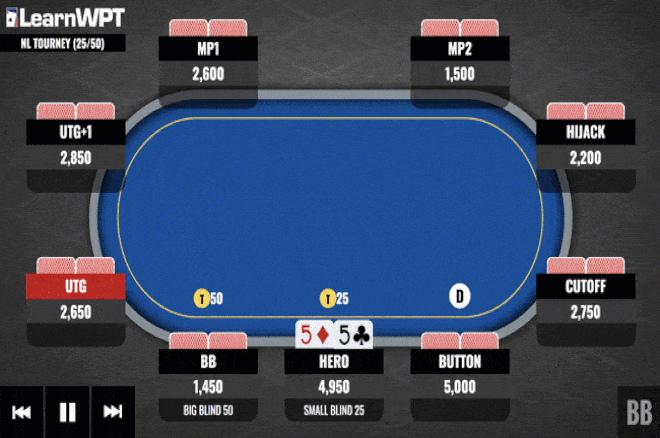Texas Holdem Big Blind Small Blind
Posted : admin On 4/15/2022Texas Holdem is a great poker game and every good poker player will tell you that you could win a lot of money if you know how to play it. You do not have to worry if you are a beginner, because Texas Holdem is a very easy game to learn and in the same time it is very entertaining to play. You would probably face some difficulties in mastering the winning strategies of the game, but our Texas Holdem strategy section is here to help you. The rules of the game are very simple – up to ten players can play at one time and when the game starts, every gambler at the table receives his two pocket cards. Immediately after the deal, the first round of betting takes place. There are four betting rounds in Texas Holdem poker game and every player have the option to check, call, raise or fold when it is his turn. During the game, five community cards are dealt face-up in the middle of the table. All Texas Holdem players can use these cards to form their hand and at the end of the game the best five-card hand wins the pot. Check netent casino.
- Texas Hold'em Big Blind Small Blind
- Texas Hold'em Big Blind Small Blind Coins
- Texas Hold'em Big Blind Small Blind
- Texas Hold'em Big Blind Small Blind Rules
- Little Blind Big Blind
For instance, the player directly to the left of the button is called the 'small blind', while the player that is two left of the button (dealer) is called the 'big blind'. If you’re on the small blind, consider raising 4x the big blind. Your opponent is going to have position on you throughout the hand, but he’s still going to need to be holding something relatively strong to make that call. If he does call and you don’t get any help on the flop you’re going to have to check and fold is he bets. Dead button: The big blind is posted by the player due for it, and the small blind and button are positioned accordingly, even if this means the small blind or the button is placed in front of an.
Poker Buttons and Blinds Explained
When you play Texas Holdem poker you have to know that there are two players who must put Blind Bets in order to create the pot. These Blind bets are forced bets, which are made before any cards are dealt. The two Blinds are posted by the two players to the immediate left of the dealer. The player to the left of the dealer places the “Small Blind” and the player to the left of the Small Blind places the Big Blind. The player at the Small Blind position has to bet half of the minimum bet at the table. The Small Blind is half of the Bid Blind, which means that the player at the Big Blind position has to bet equal to the minimum bet. In Texas Holdem poker the play proceeds in a clockwise order, which means that every player at the table will play from the Small Blind and Big Blind positions.
Blind Bets
The player to the left of the Big Blind is first to act and he has three options – to call, raise or fold. The two Blinds in the game have the option to check, call, raise or fold when the betting action returns to their position. In Texas Holdem poker, in order to stay in the hand, all gamblers at the table must match the Big Blind during the first betting round. So if the Big Blind is $50, all players must put $50 in the pot. If no one has raised before the Big Blind player, he has the option to fold, check or raise, but if someone has raised he can fold, call or raise. If no one at the table has placed a bet, the player at the Big Blind can check. In order to stay in the hand, the Small Blind player must put an amount in the pot, which is equal to the difference between the two blind bets. If you are in one of the Blind positions it is not very good because the two Blinds are early positions in the game. When you play from early position you do not have much information about the actions of your opponents and it will be quite difficult for you to win the hand. Also when you play from the Blinds it is very easy to lose money, because if you are dealt a bad hand and the community cards do not help you to continue playing you will lose your Blind Bet. But these bets are unavoidable in Texas Holdem poker and every player at the table will fall in Blind Bet position during the game.
Comments

Nothing seems to confuse new Texas hold 'em players more than the blinds. Let's sort it out.
I used to play stud and draw poker with neighbors. I don't still play, but like to read about poker strategy. Would you please explain how the big blind and little blind work in hold 'em? I'm sure many of us who read LuckyDog have no idea. — Dale H., Kankakee, Ill.
Well, Dale, since I had the same question this month from John, a co-worker of mine in Moline, Ill., it's a good time to explain the blinds in hold 'em.
Think of the blinds as antes used to stimulate betting and initiate play. There's one key difference: Unlike stud and draw poker, in which every player must pay the same pre-determined ante before each deal, in hold 'em only the first two players to the left of the dealer position have to post a blind.
The dealer for each hand is designated by a round disk called a button. Except for the first betting round, the player with the dealer button gets to act last throughout the hand. On the first betting round, the two players in the blinds act after the button, then are first to act on remaining betting rounds.
The button moves clockwise one position for each new hand. That rotates the advantage of last action and assures that for every circuit of the button around the table, each player will pay the two blinds once. The little blind usually is half the amount of the big blind.
Texas Hold'em Big Blind Small Blind
Here's an example:

You're in seat five of a nine-handed $4-$8 limit hold 'em cash game and the dealer button reaches seat three. That means you are in the big blind position and must put $4 in front of you before the cards are dealt. The player to your right in seat four must post the $2 small blind.
Two down cards are then dealt to each player, starting with the small blind. On the first betting round, action starts with the player to your left in seat six, a position called 'under the gun,' meaning first to act.
From the big blind, you are last to act before the flop. If no one has raised (to $8 in this case) when the action gets back around to you, you have two options — you can check, since you're already in for the $4 bet, or you can raise to $8. Don't fold. Even a lousy 7-2 offsuit can turn into quads on a perfect flop!
Texas Hold'em Big Blind Small Blind Coins
If someone raises before the action gets back to you pre-flop, you have three options: fold and forfeit your $4; call the additional $4, or re-raise by betting $8 more for a total of $12.
After the flop, the betting rotation changes. The player in the small blind on your right acts first for the rest of the hand, then you. If he has folded, you're first to act each round until the hand ends.
/Pokertournament-590f93dd3df78c9283b54f74.jpg)
On the next hand, the button moves to seat four. Now you're in the small blind position and must post $2 before the deal. To stay in the hand, you must match the bet amount when it's your turn ($2 more if no one raises). Or you can fold, losing your $2 small blind.

Texas Hold'em Big Blind Small Blind
On the next hand, you get the dealer button and can see your starting hands for free until it's time to post the blinds again.
We'll tackle playing strategies from the blind positions in a future column, Dale and John, but for now here are some other things to know:
— Some card rooms play hold 'em with a 'dead' button. That means the big blind is posted by the seated player due for it, and the small blind and button are positioned accordingly, whether or not players actually are seated there to receive a hand. This gives last-action advantage to a player on consecutive hands.
— If you miss paying one or both blinds, you must post the appropriate amount when you return or sit out until the big blind position advances to you. If you post mid-circuit, you still must pay the blinds when they reach you a few hands later in that round.
Texas Hold'em Big Blind Small Blind Rules
— When joining a game in progress, some card rooms require that you post the big blind amount if you want to be dealt in right away. You can choose to sit out until the big blind position reaches you normally, which is a good option because you can watch a few hands risk-free and get a feel for the table's action.
— In heads-up play using two blinds, the small blind is on the button. That player acts first before the flop and last on each subsequent betting round.
Little Blind Big Blind
E-mail your poker questions and comments to [email protected] for use in future columns. To find out more about Russ Scott and read previous LuckyDog Poker columns, visit www.creators.com or www.luckydogpoker.com.